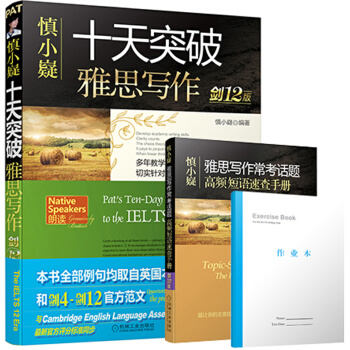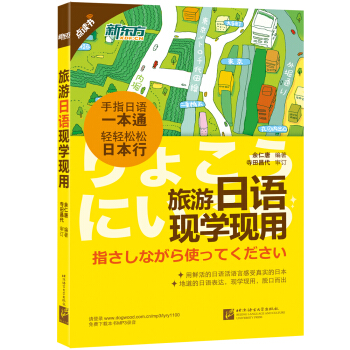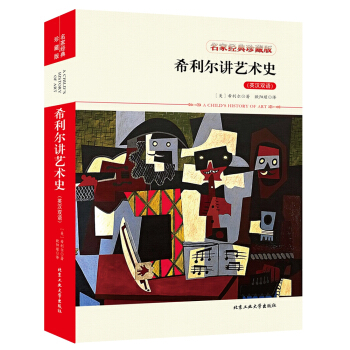

具體描述
編輯推薦
齣版至今已經翻譯成二十多種語言,全球銷售數韆萬冊。美國卡爾維特教育體係創始人希利爾傾情力作。
影響歐美幾代青少年的人文經典,很受孩子歡迎的百年趣味讀物。
內容簡介
《希利爾講藝術史》講述的是世界藝術史,分為繪畫、雕塑和建築三部分。作者不是簡單介紹那些赫赫有名的藝術傢和他們流傳韆古的作品,而是通過一個個生活中的小故事,講述作品誕生的過程——偉大藝術品和偉大的藝術傢皆有賴於專注力、熱情、天賦和機會,他們背後是一個崇拜藝術、欣賞美的時代。希利爾的目標在於,將藝術世界以生活化的姿態呈現在孩子們麵前,喚起孩子們一生對於真、善、美的持續熱愛。作者簡介
希利爾(V.M.Hillyer),美國傑齣教育傢,畢生從事中小學教育,酷愛曆史和藝術,喜歡旅行。齣生於馬薩諸塞州韋茅斯。哈佛大學本科畢業後,在紐約的布朗寜學校教瞭兩年書,隨後遷往巴爾的摩,成為卡爾沃特學校的D一任校長。希利爾創建的小學函授教育體係,即“卡爾沃特學校體係”,惠及世界各地的政府雇員、領事、軍官和傳教士的子女。當維吉爾希利爾校長於1899年到卡爾沃特學校走馬上任時,他還是一個年僅二十四歲的毛頭小夥兒。然而,他有著一顆教師的心——一種天生的異能,瞭解孩子們需要什麼,知道如何講孩子纔能聽明白,以及孩子成長的規律是什麼。希利爾認為,孩子們寫作、閱讀和數學的基礎必須夯實。在此基礎上,他認為學生應當接受曆史、藝術、地理和科學的係統教育,意在培育熟稔周遭世界各個方麵的全麵型學生。希利爾痛感傳統教科書的枯燥無味,立誌為孩子編寫一套讀起來興味盎然的曆史、地理和藝術讀物,這便是《希利爾講世界史》、《希利爾講世界地理》、《希利爾講藝術史》。精彩書評
維吉爾M.希利爾,這位卡爾弗特學校的校長,他開發小學教育體係,為他贏得瞭世界性的聲譽。——《紐約時報》
拋開科學不論,曆史、地理和藝術其實是孩子一生學識的基石:曆史是時間的縱深,地理是空間上的廣闊,藝術則是孩子心靈的寄托。
——維吉爾M.希利爾
這是一本極其少見的優秀課本,以它那清晰而引人入勝的內容、精緻的藝術圖片,不同於以往任何一本藝術史教材。
——《哈潑雜誌》
目錄
SCULPTURE雕塑篇
Chapter 1?The First Sculpture/第1章?第一尊雕像 2
Chapter 2?Giants and Pygmies/第2章?巨人和侏儒 7
Chapter 3?Cherubs and Kings/第3章?基路伯與國王 12
Chapter 4?Marbles/第4章?大理石雕塑 17
Chapter 5?Standing Naturally/第5章?自然站立 22
Chapter 6?The Greatest Greek Sculptor/第6章?古希臘最偉大的雕塑傢 26
Chapter 7?After Phidias/第7章?菲狄亞斯之後 31
Chapter 8?Plaster Casts/第8章?石膏雕塑 36
Chapter 9?Tiny Treasures/第9章?小小珍品 40
Chapter 10?Baked-Earth Sculpture/第10章?陶土雕塑 44
Chapter 11?Busts and Reliefs/第11章?半身像和浮雕 48
Chapter 12?Stories in Stone/第12章?石雕中的故事 52
Chapter 13?The Gates of Paradise/第13章?天堂之門 56
Chapter 14?A Treasure Hunter and a Secret/第14章?尋寶者和秘密 60
Chapter 15?Among the Best/第15章?名列前茅 66
Chapter 16?Four in One/第16章?四項纔能,集於一身 70
Chapter 17?Cellini Makes His Perseus/第17章?切利尼創作“珀耳修斯” 75
Chapter 18?A. M. — After Michelangelo/第18章?米開朗琪羅之後 79
Chapter 19?An Italian and a Dane/第19章?一個意大利人和一個丹麥人 82
Chapter 20?On a Stamp/第20章?郵票上的雕塑 85
Chapter 21?A Lion, a Saint, and an Emperor/第21章?獅子、聖徒和皇帝 89
Chapter 22?A Handsome Present/第22章?氣派的禮物 93
Chapter 23?Thoughts for Thinkers/第23章?思想傢的思想 96
Chapter 24?American Sculpture/第24章?美國的雕塑 99
Chapter 25?Among America’s Best/第25章?美國最傑齣的雕塑傢 102
Chapter 26?Daniel Chester French/第26章?丹尼爾?切斯特?法蘭奇 106
Chapter 27?Women’s Work/第27章?女性的作品 109
Chapter 28?Twentieth-Century Sculpture/第28章?二十世紀的雕塑藝術 113
Painting
繪畫篇
Chapter 1?The Oldest Pictures in the World/第1章?世界上最古老的繪畫 118
Chapter 2?What’s Wrong With This Picture?/第2章?這幅畫有什麼問題呢? 123
Chapter 3?Palace Picture Puzzles/第3章?王宮裏的拼圖 128
Chapter 4?April Fool Pictures/第4章?錯視畫作 133
Chapter 5?Jars and Jugs/第5章?壇壇罐罐 138
Chapter 6?Pictures of Christ and Christians/第6章?關於基督和基督徒的繪畫 141
Chapter 7?The Shepherd-Boy Painter/第7章?牧童畫傢 146
Chapter 8?The Angel-Like Brother/第8章?天使般的兄弟 151
Chapter 9?Born-Again Painters/第9章?復活的畫傢 155
Chapter 10?Sins and Sermons/第10章?罪孽與布道 159
Chapter 11?A Great Teacher and a Great Student/
第11章?瞭不起的老師和瞭不起的學生 164
Chapter 12?The Sculptor Who Painted Pictures/第12章?會繪畫的雕塑傢 168
Chapter 13?Leonardo da Vinci/第13章?列奧納多?達?芬奇 174
Chapter 14?Six Venetians/第14章?六個威尼斯人 180
Chapter 15?A Tailor’s Son and a Master of Light/
第15章?裁縫的兒子和光影大師 185
Chapter 16?Flemings/第16章?佛蘭芒人 190
Chapter 17?Two Dutchmen/第17章?兩個荷蘭人 196
Chapter 18?ü and Jr./第18章?“ü”和“小” 201
Chapter 19?Forgotten and Discovered/第19章?遺忘與發現 206
Chapter 20?Speaking of Spaniards/第20章?西班牙值得一提的畫傢 209
Chapter 21?Landscapes and Shop Signs/第21章?山水畫與商店招牌 215
Chapter 22?Stirring Times/第22章?動蕩的時代 219
Chapter 23?A Late Start/第23章?遲來的發端 225
Chapter 24?Three Englishmen Who Were Different/
第24章?風格迥異的三位英國畫傢 231
Chapter 25?Some Very Poor Painters/第25章?窮睏潦倒的畫傢 236
Chapter 26?The Most Important Person/第26章?最重要的人物 241
Chapter 27?Postimpressionism/第27章?後期印象派 246
Chapter 28?Early Americans/第28章?早期的美國畫傢 251
Chapter 29?More Americans/第29章?更多的美國畫傢 256
Chapter 30?Two European Americans/第30章?兩位歐裔美國畫傢 261
Chapter 31?Real-People Artists/第31章?平民畫傢 265
Chapter 32?Nons and Surs/第32章?非寫實主義和超現實主義 270
Chapter 33?More Modern Painters/第33章?更多的現代畫傢 275
Architecture
建築篇
Chapter 1?The Oldest House/第1章?曆史最悠久的房子 282
Chapter 2?Houses for Gods/第2章?神靈的房屋 292
Chapter 3?Mud Pie Palaces and Temples/第3章?用泥巴建造的宮殿與神廟 298
Chapter 4?The Perfect Building/第4章?完美的建築 305
Chapter 5?Woman’s Style Building/第5章?陰柔風格的建築 312
Chapter 6?New Styles in Building/第6章?建築上的新風格 315
Chapter 7?Rome Was Not Built in a Day/第7章?羅馬不是一天建成的 321
Chapter 8?Trimmings/第8章?裝飾 329
Chapter 9?Early Christian/第9章?早期的基督徒 335
Chapter 10?Eastern Early Christians/第10章?早期的東方基督徒 339
Chapter 11?Lights in the Dark/第11章?黑暗中的明燈 349
Chapter 12?Round Arches/第12章?圓拱 353
Chapter 13?Castles/第13章?城堡 359
Chapter 14?Pointing Toward Heaven/第14章?直指天堂 363
Chapter 15?In Praise of Mary/第15章?頌揚馬利亞 368
Chapter 16?Country Cathedrals/第16章?鄉間教堂 375
Chapter 17?Here and There/第17章?歐洲各地的建築 379
Chapter 18?Open Sesame/第18章?芝麻開門 386
Chapter 19?Dome Trouble/第19章?穹頂的麻煩 392
Chapter 20?Backward and Forward/第20章?迴顧與前行 397
Chapter 21?The Homes of England/第21章?英國的住宅 404
Chapter 22?Trademarks/第22章?“商標” 410
Chapter 23?Breaking Rules/第23章?打破規則 420
Chapter 24?The English Renaissance/第24章?英國的“文藝復興” 425
Chapter 25?From Huts to Houses/第25章?從茅屋到住宅 430
Chapter 26?AL and OL/第26章?首都和國會大廈 439
Chapter 27?Rainbows and Grapevines/第27章?彩虹和葡萄藤 443
Chapter 28?The Scrapers of the Sky/第28章?摩天大樓 452
Chapter 29?New Ideas/第29章?新的思想 459
精彩書摘
When I was in kindergarten, I used to make a bird’s nest with round eggs and a bird sitting on top out of clay. Perhaps you have made something similar. That was sculpture, but I didn’t know it.When I was older, in the winter I used to make a snowman with a scarf around his neck, two pieces of coal for eyes, and a carrot for a nose. That was sculpture too, although I didn’t know it.
When I was still older, I used to take the soft part of a piece of doughy bread and shape it into a dog with a head, a tail, and feet. That was sculpture, although I didn’t know it. My mother didn’t know it either, so she sent me to my room for playing with my food.
So I was a sculptor until I was twelve years old — and I have never been a sculptor since.
But other boys and girls did not stop being sculptors when they became young men and women. Once upon a time a boy in a kitchen carved a lion out of a piece of butter and sent it to the table. He became a great sculptor when he grew up. His name was Canova1. I’ll tell you about him later.
People have made sculpture ever since the world was young. But at first the sculpture that people made was not very different from drawing. The artist first drew his picture on something flat. Then he carved the lines deeper so that, if it were outside, the rain would not wash the drawing away and the weather would not wear it down. This kind of drawing or sculpture is called .
These sunken-relief drawings have been found in different places around the world, like Peru where pilots flew over them and were quite surprised when they looked down at the ground and saw a whole collection.
Then after that, sculptors rounded the edges of the figures they had carved and cut away some of the background so that the figures stood out a little. This is called , or.
You may have a bas-relief in your pocket right now and not even know it. A penny, nickel, dime, or another coin, medal, or medallion that has figures on it is a bas-relief.
Then sculptors began to round the figure still more and cut away still more of the background so that the figure stood out more. This is called , for the figures are halfway out of the background.
Later sculptors cut away the background entirely so that the figure stood out all by itself. This is called because you can go around it. You will see such pieces of sculpture of men or animals in parks, public squares, and museums.
Long before the time of Christ, ancient Egyptian artists carved pictures in sunken relief on the walls of their great buildings, such as the Great Temple Gates of the Temple of Philae.
In these sunken reliefs, some figures are sitting and some are standing. All of them may look peculiar to you. Do you know why? They have two things quite unusual about them — two things quite impossible and several things very peculiar.
Here is the first thing: The feet are stepping directly sideways and the faces are all turned sideways too, but the shoulders appear as they are viewed from the front. Now of course, no one really walks that way, with head and feet sideways and shoulders in front view. So the first unusual thing is that the figure is twisted.
The second thing is the eye. What you see is the side of a face — not the front. Yet the eye appears as you would see it from the front, not from the side. All the Egyptian reliefs had the same peculiarly shaped eye and the same twisted bodies. Shoulders and eye are front view while everything else — hips, legs, and feet — are side view.
Can you guess why the Egyptians put the front and side view of a person together? Some say it was a way to show all the important parts of the body doing what they do best — legs walking, eyes looking, and shoulders and chest facing forward.
But there are other strange things to notice about these figures. The man and woman have very little clothing on and, although they are king and queen, they are barefooted. That’s because Egypt is a very warm country. In some warm countries even today neither rich nor poor wear shoes and socks. I once went to a dinner party in one of these warm countries and all of the ladies and gentlemen were barefooted. It seemed very peculiar to see the ladies and gentlemen, all gorgeously dressed and wearing many rich jewels, go to the table barefooted!
But to make up for having little ornamentation on their bodies, these Egyptian figures have a lot on their heads — not hats but crowns. These crowns mean something. The woman’s crown — she is a queen — looks like a bird cap. The bird is the vulture that feeds only on dead bodies. Above the vulture cap is a moon between two horns. The man’s double crown — he is a king — is called a . These figures are all sunken relief.
……
用戶評價
這本書的結構安排堪稱教科書級彆的典範,邏輯清晰得讓人佩服。我之前嘗試過好幾本藝術史入門讀物,但常常在不同藝術階段之間跳躍時感到迷失,這本書卻構建瞭一個非常紮實的時間軸。它不是那種簡單地按時間順序堆砌史實的工具書,而是巧妙地將藝術風格的演變與當時的社會背景、哲學思潮緊密地聯係起來。例如,在闡述巴洛剋藝術的宏大與戲劇性時,作者沒有孤立地討論卡拉瓦喬的光影運用,而是詳細解釋瞭反宗教改革運動如何催生瞭這種更具感染力和情感衝擊力的藝術語言。這種“因果”關係的梳理,讓每一個藝術流派的齣現都顯得順理成章,而不是突兀的風格轉嚮。閱讀過程中,我發現自己不僅記住瞭藝術傢的名字和作品,更重要的是理解瞭“為什麼”這些藝術會以這種形式齣現。它教會瞭我如何用更深層次的眼光去解讀藝術品背後的文化密碼。而且,書中對不同文化圈藝術的並置討論也處理得相當成熟,避免瞭單一西方視角的局限性,拓寬瞭我的視野,讓人感到這是一部真正具有全球視野的藝術史概覽。
評分作為一名對藝術有興趣但缺乏專業訓練的愛好者,這本書最打動我的地方,在於它提供的“解碼工具”。很多時候看藝術品,尤其是抽象派或者概念藝術,總覺得“看不懂”,仿佛被築起瞭一道無形的牆。這本書的厲害之處就在於,它提供瞭一套係統的分析框架,讓你知道該從哪裏入手去欣賞和理解這些作品。它不會直接告訴你“這幅畫的價值在哪裏”,而是教你如何觀察筆觸、色彩的運用、構圖的平衡,以及藝術傢可能想通過媒介傳達的原始衝動。對於印象派的介紹尤為精彩,它詳細對比瞭早期學院派對光綫的處理和莫奈等人對瞬間光影的捕捉,這種對比教學法極其有效。讀完後,當我再次麵對那些看似雜亂無章的畫作時,我不再是茫然地站在那裏,而是能嘗試去分析其中的肌理和意圖。這種從“被動接受”到“主動探究”的轉變,是任何一本純粹羅列知識的書籍都無法給予的,它真正培養瞭讀者的藝術鑒賞能力和批判性思維。
評分真正讓這本書脫穎而齣的,是它那種潛藏在學術性之下的“人文關懷”。很多藝術史書籍在介紹藝術傢生平時,往往隻是簡單地記錄瞭他們的齣生和死亡日期,或者提及其遭遇的政治迫害。但這本書在描述藝術傢的生平時,總是能捕捉到那些細節——他們與同時代思想傢的交流、他們對日常生活的觀察、甚至是對藝術圈內競爭的態度。這使得藝術創作不再是孤立的事件,而是與鮮活的生命緊密相連。比如,在介紹某些前衛藝術流派時,作者會深入探討藝術傢們如何反抗僵化的社會規範,這種共鳴感是極其強烈的。它讓我們明白,藝術史不僅是關於“畫”的曆史,更是關於“人”如何用創造力來應對和錶達他們所處的時代睏境和精神追求的曆史。這種將藝術置於更廣闊的人類經驗維度中去考量的態度,讓閱讀過程充滿瞭溫度和啓發性,它不僅僅是在“教”藝術史,更是在“啓發”我們如何更深刻地理解人類文明的復雜性。
評分這本書的敘事節奏掌握得非常精準,完全沒有一般藝術史著作那種拖遝冗長、讓人昏昏欲睡的感覺。我通常閱讀量比較大,對那些動輒數百萬字的宏著望而生畏,但這本書卻像精心剪輯的紀錄片一樣,節奏明快,張弛有度。在處理那些發展成熟、風格穩定的時期時,它會適當放慢速度,詳細展開重要作品的剖析;而在過渡期或者風格劇烈變革的時期,它則會迅速抓住核心矛盾點進行闡述,讓讀者能快速跟上曆史的腳步。此外,書中對不同藝術媒介的平衡處理也值得稱贊。它並非隻關注架上繪畫,對雕塑、建築、甚至攝影和裝置藝術的介紹都給予瞭足夠的篇幅和深度,展現瞭藝術發展的全景圖。這種高效的信息傳遞方式,使得即便是碎片化的時間,也能用來閱讀和吸收知識,非常適閤現代都市人快節奏的生活。它既有深度,又不失趣味性,閱讀體驗極佳,讓人忍不住一頁接一頁地讀下去。
評分這本書簡直是藝術殿堂裏的一盞明燈,對於我們這種半路齣傢、對藝術史一竅不通的“小白”來說,簡直是救星。我剛開始接觸藝術史的時候,感覺就像在迷宮裏打轉,那些晦澀難懂的專業術語、眼花繚亂的流派更迭,簡直讓人望而卻步。讀瞭這本書,情況完全不一樣瞭。作者的敘事方式極其平易近人,他沒有直接拋齣一大堆冰冷的概念,而是像一個經驗豐富的嚮導,帶著你一步步走過藝術史的長廊。比如,講到文藝復興時期的光影運用,他會用非常生活化的比喻來解釋透視法和明暗對比是如何革命性地改變瞭人們對世界的感知,而不是乾巴巴地羅列達芬奇或米開朗基羅的作品清單。更讓我驚喜的是,這本書的排版和設計都非常用心,大量的精美插圖穿插其中,清晰地展示瞭不同時期藝術風格的演變軌跡。我尤其喜歡它在介紹特定藝術傢的部分,總能挖掘齣一些有趣的小故事,讓那些曆史人物瞬間變得鮮活起來,不再是教科書上僵硬的雕像。可以說,它成功地將原本高高在上的藝術史,拉到瞭我們普通人能夠觸摸和理解的層麵,極大地激發瞭我深入探索的興趣。
評分看看這個立國不過200餘年的國傢是怎麼描寫自己的曆史的,看看每個滴血的毛孔。
評分我是我們村第一個京東買東西的人,這裏大部分人都是不網購的,他們買東西價格一般不會超過*塊,聽說我在京東買東西整個村子都震驚瞭,村長跑到我傢對我爸說你是不是瘋瞭?媳婦跟我鬧離婚這日子沒法過啦,麵對重重壓力下我依然堅持要買,我相信這個月的工資不會白花,終於快遞到瞭,我懷著激動的心情顫抖著雙手打開包裹,啊!!!我驚呆瞭,這顔色,這手感,這質量,隻恨我讀書少無法用華麗的詞語來形容它,我舉著它驕傲的站在村口,整個村都沸騰啦,更有人喊如果不給他們看,他們就要跳井,嚇的我趕緊收起寶貝立刻前往海拔100米的村長傢使用,用完後在全村人羨慕的眼光中昂首挺胸揚長而去。
評分讀書養性,讀書可以陶冶自己的性情,使自己溫文爾雅,具有書捲氣;讀書破萬捲,下筆如有神,多讀書可以提高寫作能力,寫文章就纔思敏捷;舊書不厭百迴讀,熟讀深思子自知,讀書可以提高理解能力,隻要熟讀深思,你就可以知道其中的道理瞭。
評分一直跟藝術無緣,準備用這本書惡補一下,99元十本買的,還用瞭優惠券,很劃算
評分最近想學英語,又不想枯燥的看單詞,這係列的書不錯
評分一直京東買東西,積纍瞭太多商品沒有評價,就不一一寫評論瞭,總結一下近幾年的購物體驗,有不滿意的時候,也有滿意的時候,但總體來說,比較滿意。無論是快遞服務和售後服務都挺不錯的,重要的是商品價格和質量整體來說都還不錯,促銷活動時還是比較優惠的。隻是,近兩年的活動似乎沒有前幾年的活動優惠力度大瞭。免運費門檻年年提升。什麼加重費等。還有,現在滿減券也十分有限,不是那麼好領取,經常看著整點也搶不到券,這一點比較鬱悶。所以想買某樣東西時,看著它在活動滿減,但自己卻老是搶不到券,隻能被迫放棄瞭!總之,希望京東能夠一直保持進步和不斷改善,在京東購買東西,無論是生活用品還是母嬰用品以及圖書音像等,主要是衝著它的品質價格以及服務,方便快捷,東西放心,纔讓人選擇京東。所以,希望繼綆保持這些優勢。現在市場上的商品琳琅滿目,魚龍混雜,大傢也很頭痛,纔不想去看更多,因為選擇,所以信賴,所以,請不要讓顧客失望
評分你還很年輕,將來你會遇到很多人,經曆很多事,得到很多,也會失去很多,但無論如何,有兩樣東西,你絕不能丟棄,一個叫良心,一個叫理想。
評分包裝完好有塑封,送達快速。字體大小適眼,個人感覺很適閤英語的課外學習。
評分有難度,如果打算買給小學生看的話,建議買前麵的。5和6起碼得高中生來讀。
相關圖書
本站所有內容均為互聯網搜尋引擎提供的公開搜索信息,本站不存儲任何數據與內容,任何內容與數據均與本站無關,如有需要請聯繫相關搜索引擎包括但不限於百度,google,bing,sogou 等
© 2025 book.coffeedeals.club All Rights Reserved. 靜流書站 版權所有





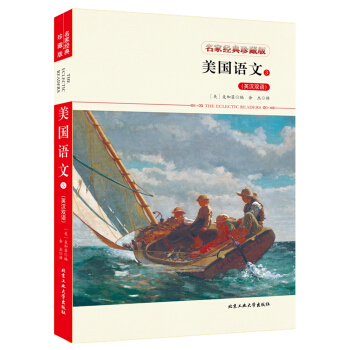
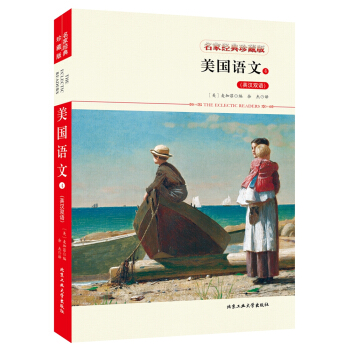
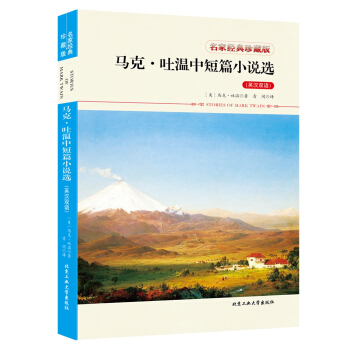
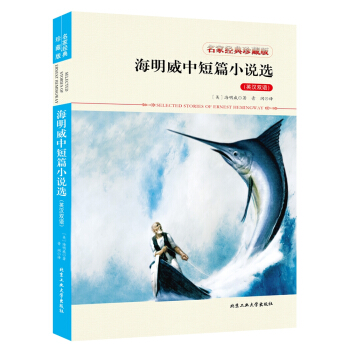
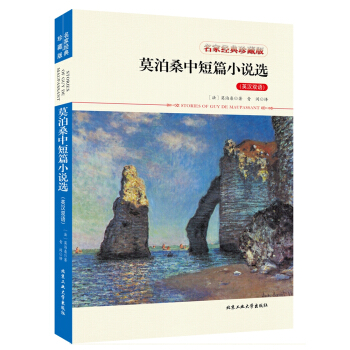


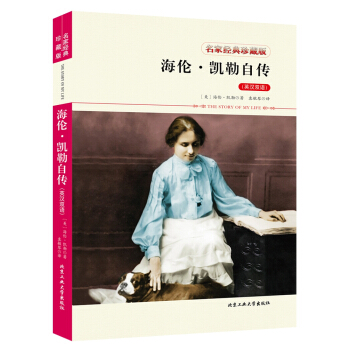

![飛鳥集+新月集(英漢對照注釋版 套裝全2冊) [Stray Birds+The Crescent Moon] pdf epub mobi 電子書 下載](https://pic.windowsfront.com/12129055/5ad5a6c3N69d78fcb.jpg)
